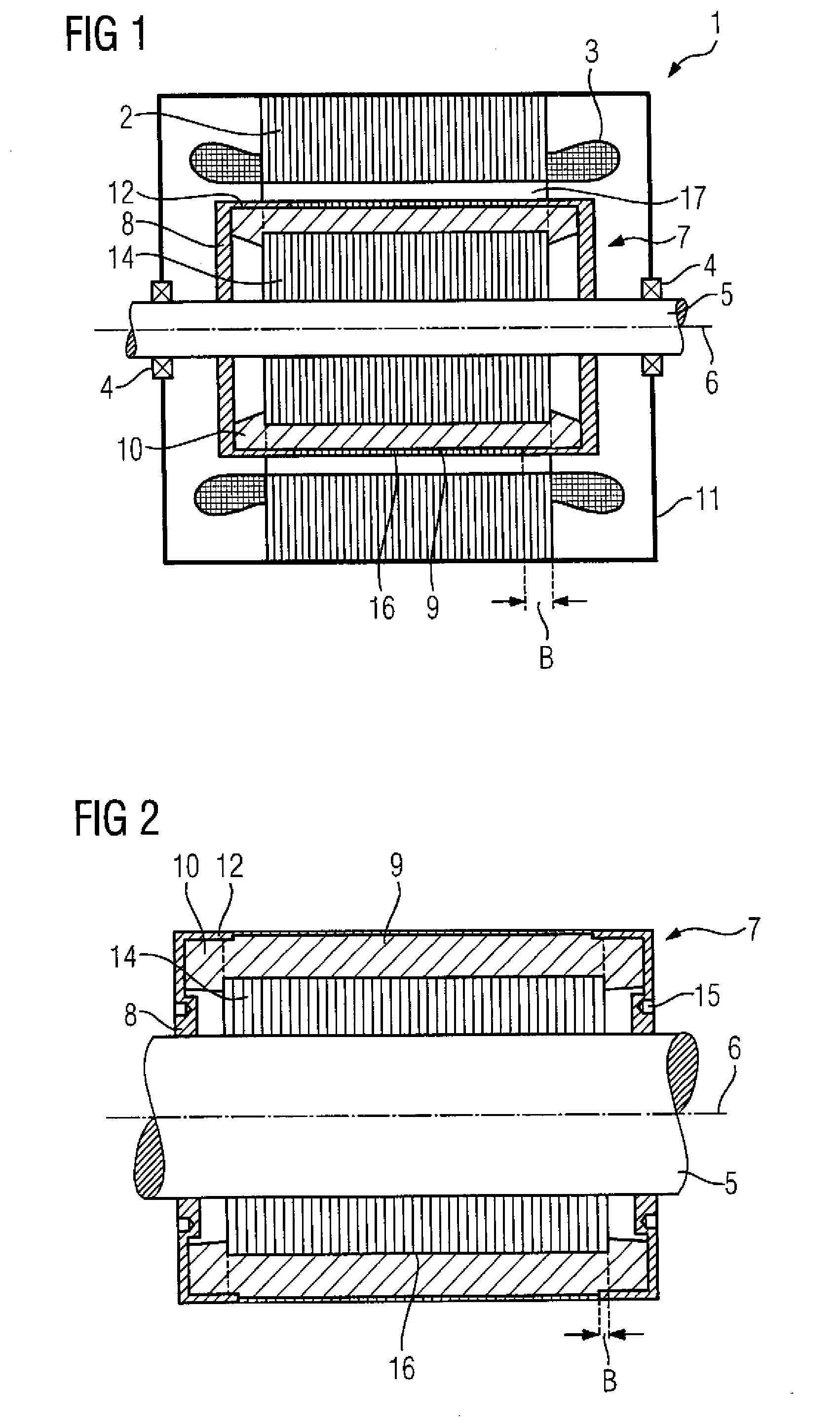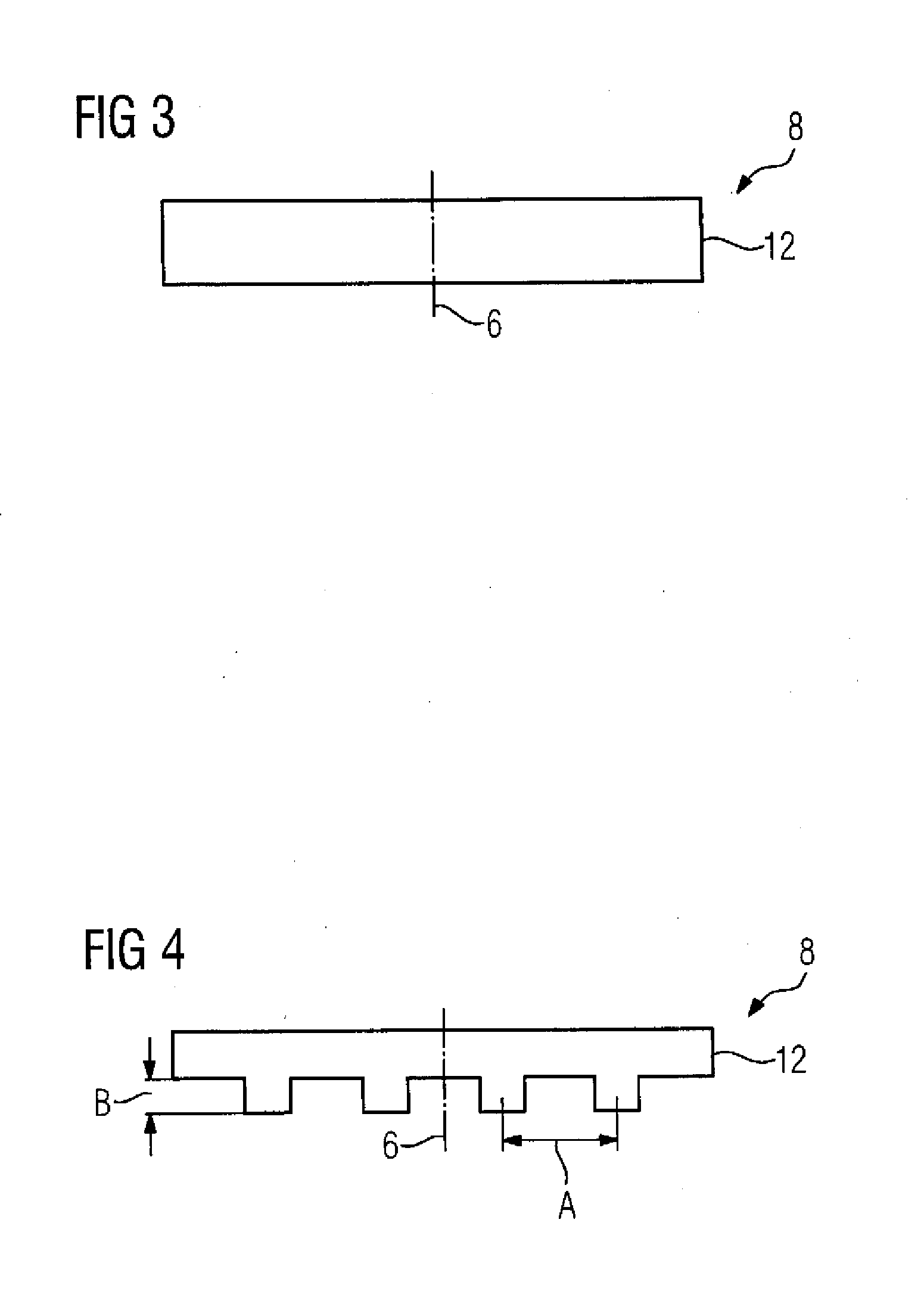Rotor of an asynchronous machine with retaining element
a technology of retaining element and asynchronous machines, which is applied in the direction of synchronous motors, cage rotors, stator/rotor bodies, etc., can solve the problems of material cracks or even fractures, existing solutions are either particularly costly to implement, and not entirely suitabl
- Summary
- Abstract
- Description
- Claims
- Application Information
AI Technical Summary
Benefits of technology
Problems solved by technology
Method used
Image
Examples
Embodiment Construction
[0027]Throughout all the figures, same or corresponding elements may generally be indicated by same reference numerals. These depicted embodiments are to be understood as illustrative of the invention and not as limiting in any way. It should also be understood that the figures are not necessarily to scale and that the embodiments are sometimes illustrated by graphic symbols, phantom lines, diagrammatic representations and fragmentary views. In certain instances, details which are not necessary for an understanding of the present invention or which render other details difficult to perceive may have been omitted.
[0028]Turning now to the drawing, and in particular to FIG. 1, there is shown an asynchronous machine 1 in a housing 11 which has a stator 2 and a winding system (not shown in greater detail) which forms winding heads 3 on the end faces of the stator 2. Spaced apart from the stator 2 by an air gap 17 is the rotor 7. The rotor 7 is a squirrel-cage rotor which among other thin...
PUM
| Property | Measurement | Unit |
|---|---|---|
| rotation speed | aaaaa | aaaaa |
| diameter | aaaaa | aaaaa |
| strength | aaaaa | aaaaa |
Abstract
Description
Claims
Application Information
 Login to View More
Login to View More - R&D
- Intellectual Property
- Life Sciences
- Materials
- Tech Scout
- Unparalleled Data Quality
- Higher Quality Content
- 60% Fewer Hallucinations
Browse by: Latest US Patents, China's latest patents, Technical Efficacy Thesaurus, Application Domain, Technology Topic, Popular Technical Reports.
© 2025 PatSnap. All rights reserved.Legal|Privacy policy|Modern Slavery Act Transparency Statement|Sitemap|About US| Contact US: help@patsnap.com



